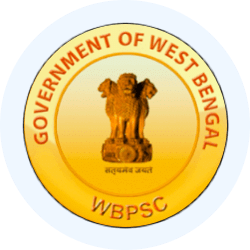West Bengal, the sixth-largest economy in India, registered a gross state domestic product (GSDP) of US$ 132.86 billion in the fiscal year 2014-15. It stands as the second most densely populated state in the country and boasts a significant domestic consumer market. The state's GSDP witnessed a compound annual growth rate (CAGR) of 11.06 percent from 2004-05 to 2014-15. Agriculture plays a pivotal role, contributing 18.8 percent to the GSDP in 2014-15. West Bengal's strategic geographical location makes it a conventional marketplace for eastern India, the Northeast, Nepal, and Bhutan, serving as a strategic entry point for Southeast Asian markets. Kolkata, the capital city, offers a cost advantage for businesses compared to other metropolitan cities. From FY 2000-15, the state attracted a total foreign direct investment (FDI) of US$ 2.9 billion.
During this period, the state exhibited an average annual NSDP rate of approximately 11.05 percent. The per capita GSDP in 2014-15 was US$ 1,450.0, a substantial increase from US$ 555 in 2004-05, with a compound annual growth rate (CAGR) of 10.08 percent. In 2014-15, the tertiary sector contributed 60.2 percent to the state's GSDP at factor cost, followed by the primary sector (24.9 percent) and the secondary sector (14.9 percent).
West Bengal holds the unique distinction of being continuously governed by a Left Front government for over a quarter of a century, with a distinctive vision for political, economic, and social transformation. This vision focuses on land reforms, ensuring security of tenure to tenant cultivators, and promoting people's participation through panchayat institutions. Despite challenges, the state has shown resilience, attracting FDI and achieving positive growth indicators.
With a population of around 82 million in 2001, West Bengal faces the challenge of being the fourth most densely populated state, with a density of 904 persons per sq. km, almost three times the national average. The concentration of population exerts pressure on basic infrastructure, health, and education services. Kolkata remains a hub of human development, with the surrounding regions experiencing varying levels of development. Certain sub-regions within the state, such as Paschimanchal in the west and North Bengal, face specific developmental challenges due to historical, locational, and social factors.
- Darjeeling, Cooch Behar and Jalpaiguri and
- The “chicken neck” of North Dinajpur.
These areas aren’t solely geo-ecologically distinct, however additionally were till recently separated with very little interaction in terms of transport or trade, particularly when the Partition of India broke pre-existing links. The region as a full includes a lot of higher rate of immigration than alternative components of West Bengal. The benefits area unit that migrants bring in new skills and additionally tend to be higher educated, in order that they use native instructional and alternative resources higher. However this additionally raises queries, as an example the matter of the native disadvantaged teams, like the SCs/STs within the space.
West Bengal highlights 3 important relationships that have crucial implications for human development anyplace. The primary is that the inherent problem of an autonomous development flight inside a constituent province of a rustic, even with a federal system of state, and also the role of broader economics processes in decisive outcomes even inside the state. The second is that the importance of mobilising resources for public intervention, and also the attainable limitations upon the advance of human development obligatory by commercial enterprise constraints. The third is that the crucial two-way relationship between institutional modification and economic processes, likewise because the importance of continuing mobilisation and involvement of normal individuals within the infrastructure and delivery mechanisms necessary for improving conditions of human development.
West Bengal has been successful in bringing down each birth rates and death rates, with one in every of the foremost speedy declines in birth rate in India. Expectancy within the State is well on top of the national average. The sex ratio in West Bengal has shown improvement in recent times, so it’s currently simply on top of the national average, whereas the 0-6 years sex quantitative relation is far beyond the all-India average. West Bengal includes a far better record of guaranteeing the lives of girl infants than India as a full.
The state Human Development Report (HDR) brings out a mixed image of the present state of human development in state, with some vital successes and additionally some areas of inadequate action, additionally as bound rising issues.
The state HDR analyses 2 major public initiatives that have characterized the State for the last 26 years, i.e. land reforms and decentralization and has examined their effects on human development. Further, it makes an attempt to grasp the explanations on why the positive effects of those initiatives haven’t been a lot of pronounced on human development attainments.
In addition to the “traditional” problems lined in an exceedingly human development report like health, education and livelihoods, and also the chapters ashore reforms and decentralization, the West Bengal HDR analyses problems like human security, material conditions, environment and issues of special regions inside the State.























